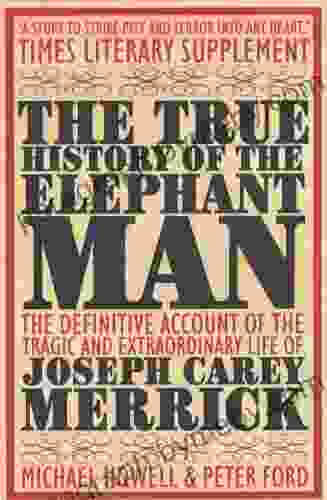Design Thinking: Understanding How Designers Think and Work

Design Thinking is a human-centered problem-solving approach that helps teams develop innovative solutions to complex problems. It is a creative and iterative process that involves understanding the needs of users, generating ideas, prototyping solutions, and testing and refining those solutions.
Design Thinking is used by a wide range of organizations, from startups to Fortune 500 companies. It is a valuable tool for solving problems in any industry or sector.
The Design Thinking process typically involves five stages:
4.3 out of 5
| Language | : | English |
| File size | : | 7776 KB |
| Text-to-Speech | : | Enabled |
| Screen Reader | : | Supported |
| Enhanced typesetting | : | Enabled |
| Print length | : | 176 pages |
- Empathize. The first step is to understand the needs of the people you are designing for. This involves conducting interviews, observing users, and immersing yourself in their world.
- Define. Once you have a good understanding of the users' needs, you can define the problem that you are trying to solve. This problem statement should be specific, measurable, achievable, relevant, and time-bound.
- Ideate. The next step is to generate ideas for solutions to the problem. This can be done through brainstorming, sketching, or any other creative method.
- Prototype. Once you have a few ideas, you can start to create prototypes of those solutions. Prototypes can be anything from a rough sketch to a working model. The purpose of a prototype is to test the solution and get feedback from users.
- Test. The final step is to test your solution with users. This involves getting feedback on the prototype and making changes as needed.
The Design Thinking process is iterative. You may need to go back and forth between stages several times before you find a solution that meets the needs of users.
Design Thinking offers a number of benefits, including:
- Improved problem solving. Design Thinking helps teams to develop innovative solutions to complex problems.
- Increased creativity. Design Thinking encourages teams to think outside the box and come up with new and creative ideas.
- Better user experience. Design Thinking solutions are designed to meet the needs of users. This leads to better user experiences and increased satisfaction.
- Faster time to market. Design Thinking can help teams to develop solutions more quickly. This is because the iterative nature of the process allows teams to quickly test and refine their ideas.
- Reduced risk. Design Thinking reduces the risk of failure by allowing teams to test their solutions before they invest in them.
This book is for anyone who wants to learn more about Design Thinking. It is a valuable resource for designers, engineers, product managers, and anyone else who is involved in solving problems.
[Author's name] is a leading expert in Design Thinking. He has over 20 years of experience in the field and has helped countless teams to develop innovative solutions to complex problems.
Click here to Free Download your copy of Design Thinking: Understanding How Designers Think and Work.
4.3 out of 5
| Language | : | English |
| File size | : | 7776 KB |
| Text-to-Speech | : | Enabled |
| Screen Reader | : | Supported |
| Enhanced typesetting | : | Enabled |
| Print length | : | 176 pages |
Do you want to contribute by writing guest posts on this blog?
Please contact us and send us a resume of previous articles that you have written.
 Book
Book Novel
Novel Page
Page Chapter
Chapter Text
Text Story
Story Genre
Genre Reader
Reader Library
Library Paperback
Paperback E-book
E-book Magazine
Magazine Newspaper
Newspaper Paragraph
Paragraph Sentence
Sentence Bookmark
Bookmark Shelf
Shelf Glossary
Glossary Bibliography
Bibliography Foreword
Foreword Preface
Preface Synopsis
Synopsis Annotation
Annotation Footnote
Footnote Manuscript
Manuscript Scroll
Scroll Codex
Codex Tome
Tome Bestseller
Bestseller Classics
Classics Library card
Library card Narrative
Narrative Biography
Biography Autobiography
Autobiography Memoir
Memoir Reference
Reference Encyclopedia
Encyclopedia Jessica Brody
Jessica Brody Jennifer Hartman
Jennifer Hartman Jed Dearybury
Jed Dearybury Katie Smith
Katie Smith Jeffrey L Buller
Jeffrey L Buller The Beginner S Bible
The Beginner S Bible Jill Winch
Jill Winch Jenny Rae
Jenny Rae Jean L S Patrick
Jean L S Patrick Jennie Hall
Jennie Hall King Ellie
King Ellie Jeremy Gordin
Jeremy Gordin Jenny Kales
Jenny Kales Jeremy Robinson
Jeremy Robinson Jessica Battilana
Jessica Battilana Jenny Handy
Jenny Handy Tony Soper
Tony Soper Jennifer Steil
Jennifer Steil Susan Wise Bauer
Susan Wise Bauer Mina Stone
Mina Stone
Light bulbAdvertise smarter! Our strategic ad space ensures maximum exposure. Reserve your spot today!

 Charles DickensUnlock Your Web Design Potential with Shelly Cashman's Comprehensive Guide
Charles DickensUnlock Your Web Design Potential with Shelly Cashman's Comprehensive Guide Jamie BellFollow ·3k
Jamie BellFollow ·3k John MiltonFollow ·13.4k
John MiltonFollow ·13.4k Simon MitchellFollow ·5.7k
Simon MitchellFollow ·5.7k Chase MorrisFollow ·9.3k
Chase MorrisFollow ·9.3k F. Scott FitzgeraldFollow ·2.1k
F. Scott FitzgeraldFollow ·2.1k Al FosterFollow ·12.7k
Al FosterFollow ·12.7k Robert FrostFollow ·7.7k
Robert FrostFollow ·7.7k Arthur Conan DoyleFollow ·11.4k
Arthur Conan DoyleFollow ·11.4k

 Jeremy Mitchell
Jeremy MitchellUnveiling the Truth: The Captivating Saga of The Elephant...
Embark on a poignant journey through the...

 Marvin Hayes
Marvin HayesThe Day The World Came To Town: A Heartwarming Tale of a...
In the quaint...

 Hugh Bell
Hugh BellExplore the Avian Treasures of Wisconsin: A Review of...
Unveiling the Secrets of...
4.3 out of 5
| Language | : | English |
| File size | : | 7776 KB |
| Text-to-Speech | : | Enabled |
| Screen Reader | : | Supported |
| Enhanced typesetting | : | Enabled |
| Print length | : | 176 pages |
















